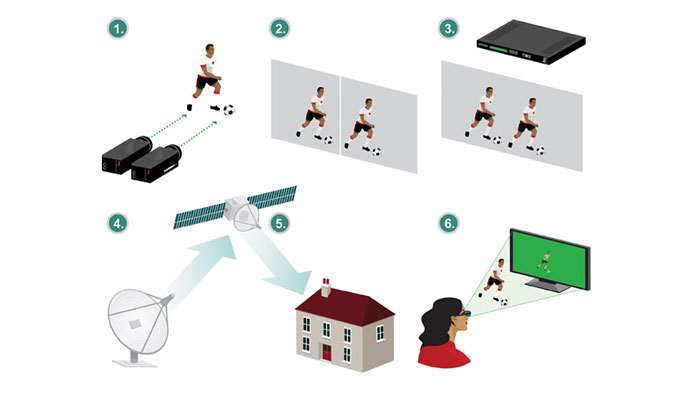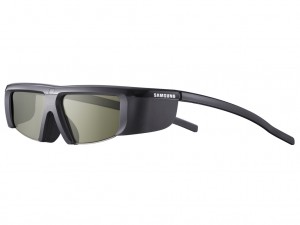How 3D TV Actually Works – Technology Explained!
3D TV Why Now?
3D TV certainly isn’t new, most of us have experienced the ritual of donning cheap polarised rather dorky cardboard (showing my age here!) or plastic glasses to watch the latest action flick at the cinema. The actual technology though goes back much further to the 1920’s. Television manufacturers have though been inspired by the more recent success of 3D movies at the cinema with films like Beowulf. The home entertainment industry is set on making 3D TV the next big thing in your living room and all the major consumer electronics companies like Panasonic, Samsung, Toshiba, Sharp, LG, Philips and Sony are getting in on the action.
A more pressing technical reason for the delay in 3DTV was the low response (the time it takes a pixel to change from black to white and back again) or refresh rate of televisions. Up until relatively recently televisions screens achieved this at anything from 50-100Hz a second. Plasma televisions typically boast a much faster response rate than LCD and LED TV’s. The faster the response times the less light is lost between frame changes, hence reducing ‘cross-talk ’ (image blurring and ghosting). Such are the advances in this area that Panasonic have launched a range of 600Hz televisions.
Finally, there is the matter of content! 3D Blu-ray players have been developed alongside the 3D TV’s and 3D Blu-ray movies are on their way thanks to Hollywood. Also, importantly, satellite broadcaster SKY have launched a 3D subscription channel.
What do I need to watch 3D TV?
• A 3D-ready TV (40″ plus and 1080p, you know this makes sense already!)
• 3D glasses
• A subscription to Sky 3DTV Service and/or
• A 3D Blu-ray player and a few 3D Blu-ray movies
The principles of 3D TV and how it works
We perceive depth because the right eye and the left eye are in different locations and each eye captures an ever so slightly different image. The brain processes the two different images into a single image enabling us to focus and perceive the world around us with a sense of depth.
The central principle behind 3D TV is exactly the same – two different images are displayed and then shown to the left eye and right eye. The footage shown to the eyes is recorded from two slightly different perspectives, either from two different cameras, or a camera with two lenses.
This footage is then interlaced into one image and broadcast to 3D-ready TVs which are then able to polarise (separate) the original 3D broadcast back into separate images. They appear on the screen as blurred images – but when viewed through 3D glasses, the separate images are directed to either the right eye or left eye, creating the impression of depth.
Is there an industry standard for 3DTV?
It feels like we’ve been here before… Currently there is no industry wide standard for 3D TV’s and as such there may be some compatibility issues between different hardware. Therefore how future proof an early purchase may be might only surface with time, that’s not to say you shouldn’t get stuck in! There is though thankfully a defined standard with 3D Blu-ray.
High definition and Blu-ray did though manage to sort things out fairly quickly and the influence of the broadcasters of 3D (currently only Sky) are sure to provide some leadership. If in doubt, ask us, we have our ear close to the ground!
What are the different 3DTV standards?
There are currently several different formats being employed to produce 3D television although the basic principles are the same, the methods of recording, displaying and watching the content differ.
Anaglyphic 3D
Many people associate 3D with a pair of cardboard red/cyan (a kind of greenish colour) tinted glasses and legendary movies like Jaws 3D. This format is called anaglyphic 3D and up until quite recently this was the most popular way to create 3D content.
Anaglyphic 3D is created by filming in two different coloured layers – usually red and cyan, these images are filmed slightly offset from the actual image focused on. The viewer when wearing the filtered glasses sees a differently coloured image in each eye. However, the viewers brain is tricked into thinking the coloured layers are as one, thus creating an added sense of depth and creating the 3D image.
This form of 3D viewing is now largely obsolete. Common problems with the format included poor image quality, blurring and even motion sickness in extreme cases.
Polarisation 3D
The polarisation format will be instantly familiar to anyone who has been to see a 3D movie at the cinema of lately. These grey tinted, plastic glasses are much more substantial.
The general principles are the same as for the anaglyphic 3D format as two slightly different images are seen by each eye, assembled by the brain into one image creating a sense of depth. The way of achieving this though is very different. These glasses work by allowing each eye to see differently polarised light. For example, light polarised in one direction will be seen by the left eye and light polarised in the other by the right.
The Sky’s 3D TV subscription channel launched earlier this year uses this format.
Alternate Frame Sequencing
The frame sequential format is already the accepted standard for 3D Blu-ray. This format requires a pair of active shutter glasses to deliver it’s 3D content.
In this format the footage is recorded by two cameras (or a single dual lensed camera) and is then placed next to each other on a ‘strip’ of film, following this it is displayed frame-by-frame in an alternating order. The active shutter glasses are synchronised with the television through an infra-red signal and rapidly blink on and off to play to back images alternatively to the viewers eyes at a rate of 50 frames per second.
The majority of new 3D TV’s come with one or two pairs of active shutter glasses. These glasses are typically designed to be brand specific although Panasonic and Samsung are interchangeable. These glasses are primarily designed for watching 3D Blu-ray content. These glasses are also quite a lot more expensive and require a power source to drive the LCD shutters, usually via a USB port on the television. Some viewers have complained of warm eyes after prolonged use from these early models.
The future of 3DTV…
Of course the future for 3D television is the development of technology that doesn’t require glasses at all. Such technology is refered to as auto-stereoscopic. Philips has led development of this format but a commercial version is said to be more than five years away.













